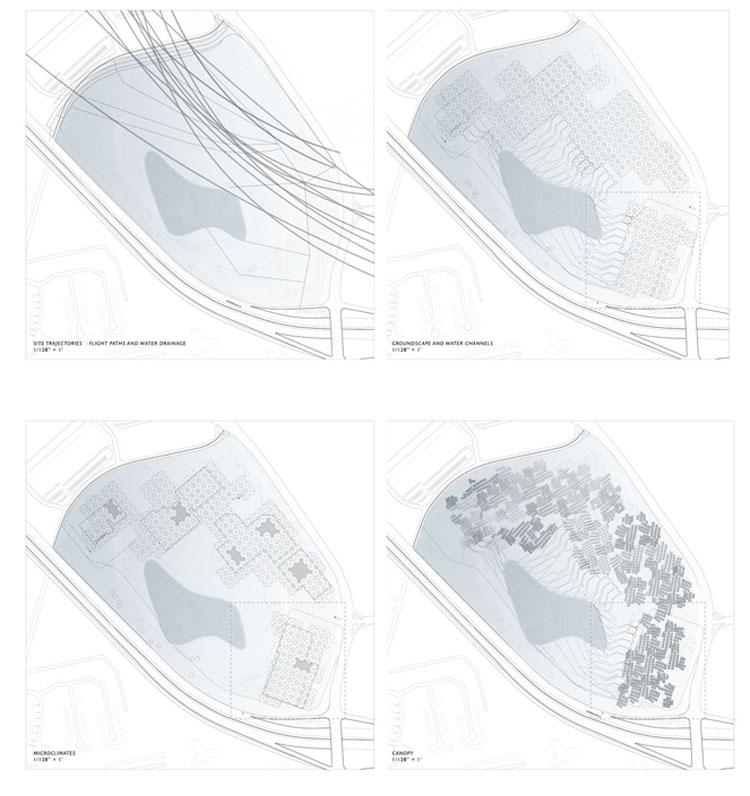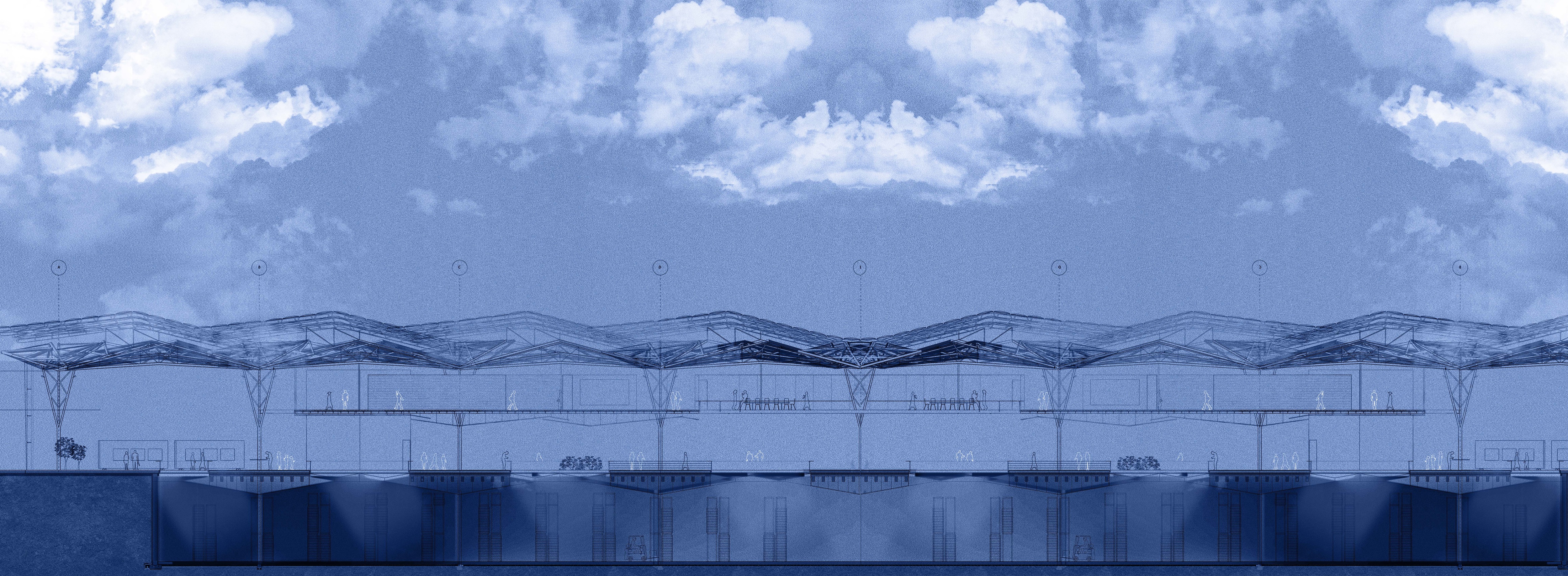IMMERSIVE
PRAGMATOPOS
Labor in the cloudscape2011-2012
Academic research: Degree Project
Initiated as part of degree project at Washington University in St.Louis. 2011 - 2012
Advisor: Heather Woofter
Project Published in :
Woofter, Heather, and Sung Ho Kim. 3 Stages Of Architectural Education. Seoul, Korea: DAMDI Publishing Co., 2016.
The contemporary of William Whyte’s organization man* is the cloudworker. The hypermediated landscape of the cloudworker’s laboring territory is here conceptualized as the cloud. The post-war period of the 1950s saw the rise of many varieties of the human and post-human self (including the cyborg**), alongside the rise of computation and systems of control.
With this arose labor landscapes, dubbed by Rienhold Martin as the “organization complex”. The cloudworker occupies a decentralized version of these zones. Here, fluid control and organization straddles the logistical and cognitive worlds of the digital and the physical. These landscapes are a combination of logistical media, cognitive subjects/objects, users/interfaces, caught in the flows of capital. They produce what Keller Easterling has called ‘spatial protocols’. Conducting notational scores of efficiency and pragmatism through real-time organization of dynamic flows, the cloudworker occupies decentralized zones. The digital point-cloud has a physical manifestation for trade routes, shipping containers, and consultant schedules, in the form of temperature-controlled warehouses to airport-adjacent hotels. These are counterpoints to the illusory lightness of the algorithms that dictate the paths of the movement of goods, profits and losses, money, humans, and material.
These potential movements require a force. The human-machine moves these points. Labor still exists. Within this context, the project asks:
These potential movements require a force. The human-machine moves these points. Labor still exists. Within this context, the project asks:

What are our spatial logics when we have razed our lands?
What grids do we lay
when lived lines are erased
with what tools do we plow?
Now concrete aligns with contrails, and warehouses float clouds.
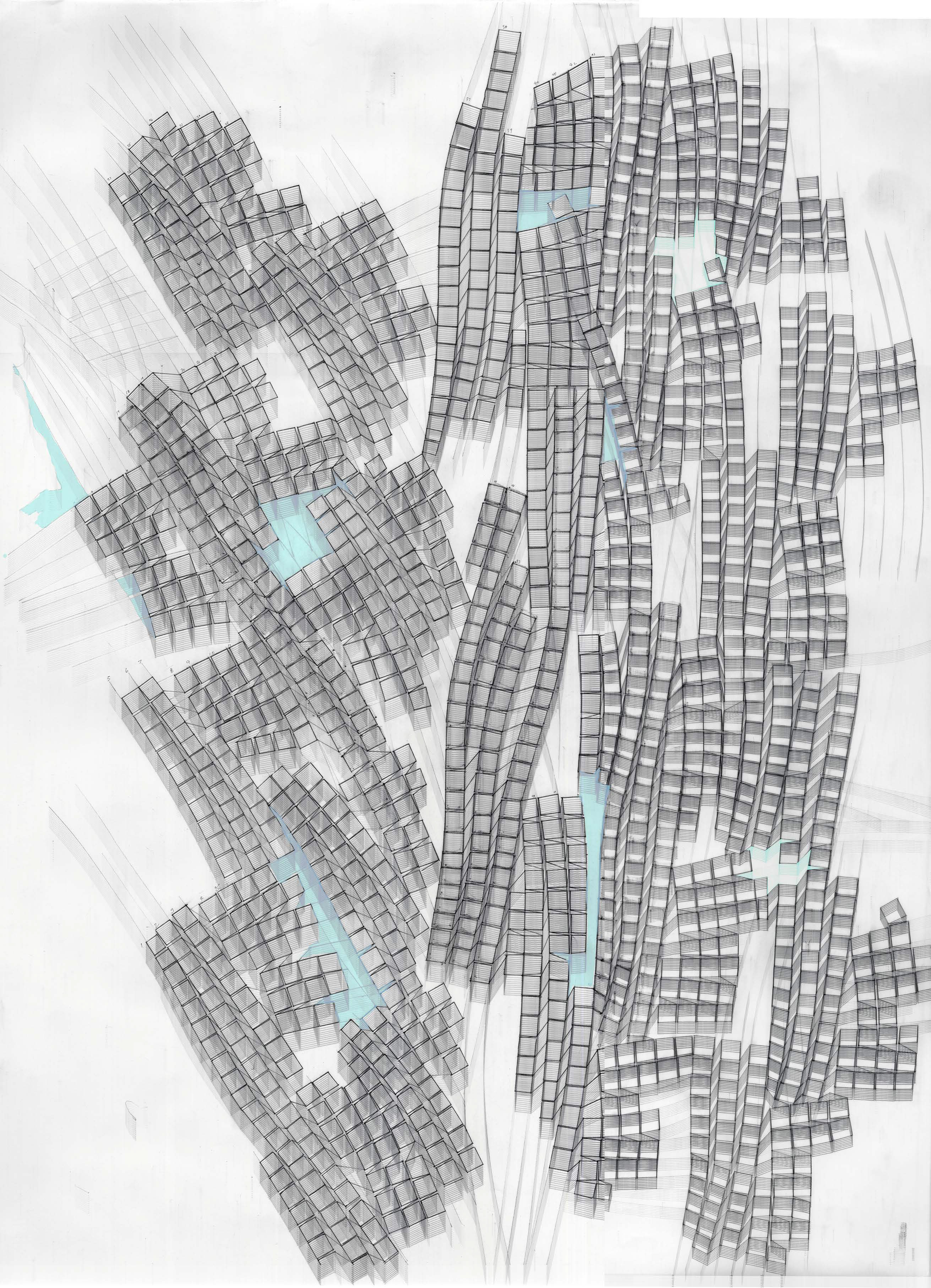
Aggregate formation studies #1 | Occupying contrails
(drawing. pencil + digital)

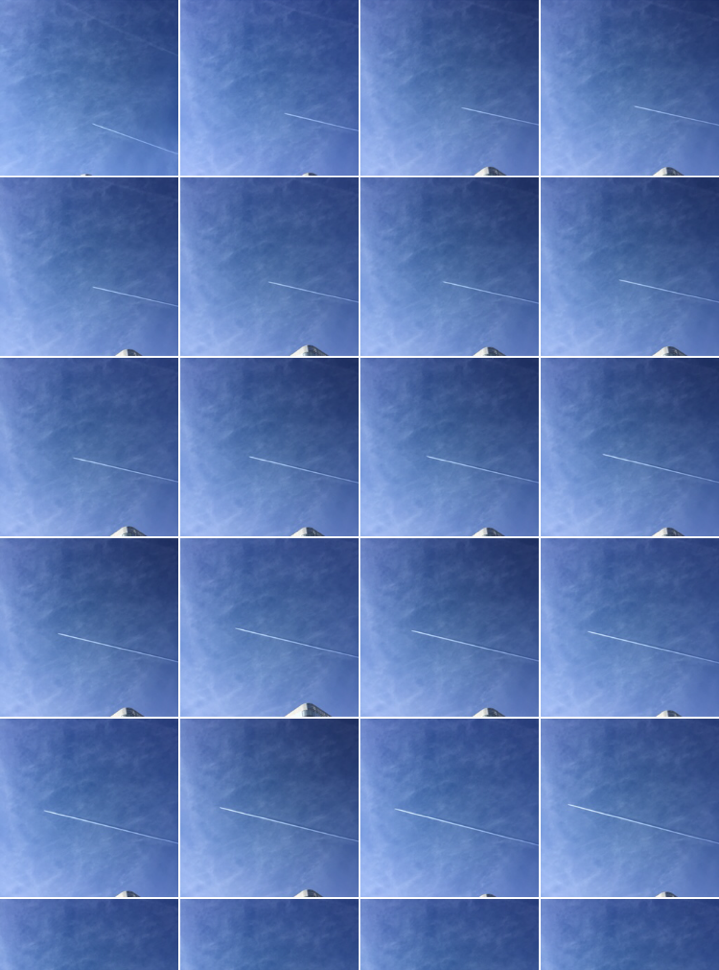
Aggregation study #2 . Contrails organizing mutable space
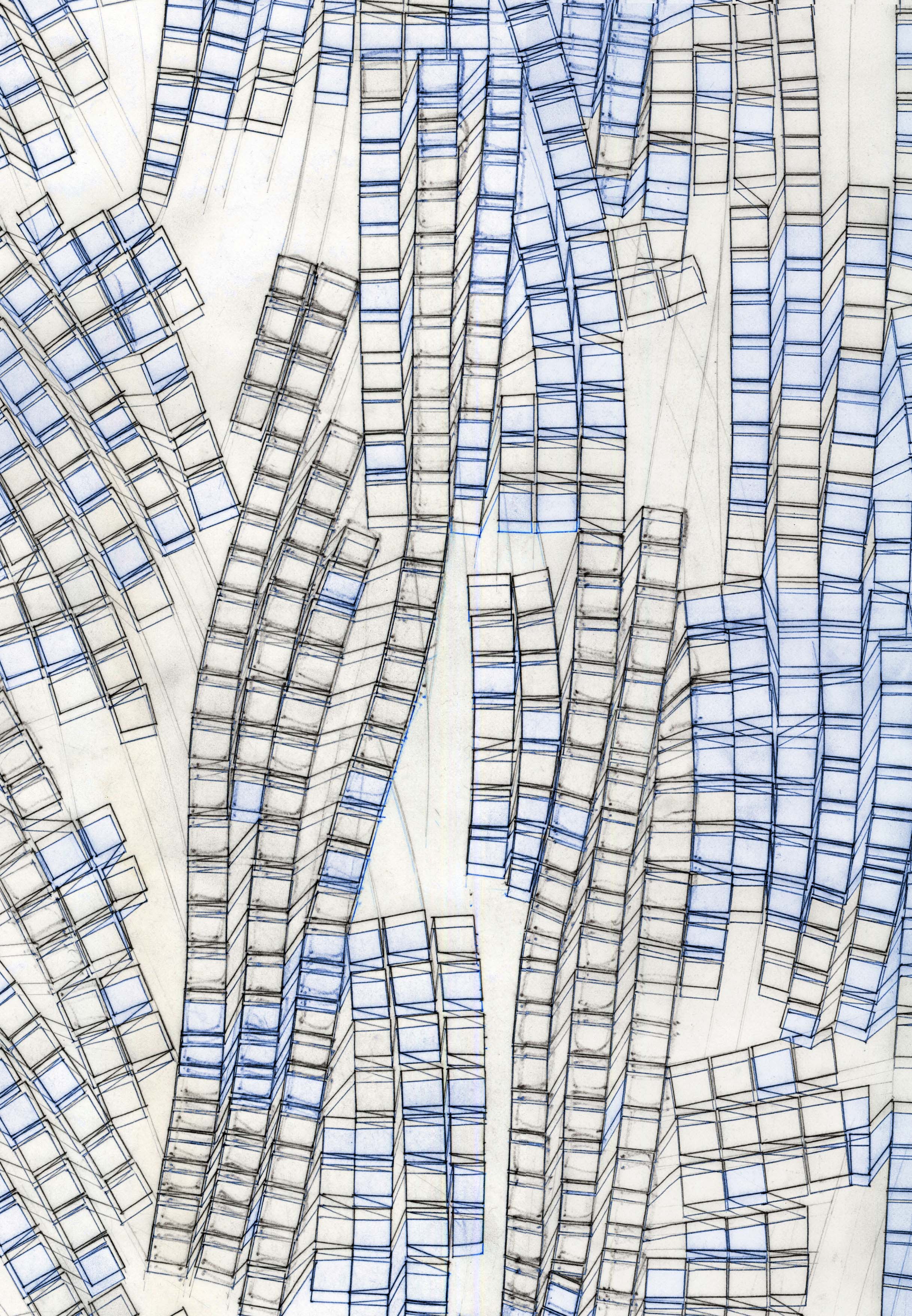

Aggregation study #3 . Contrails organizing mutable space
Inhabited Pragmatopos
Inhabited Pragmatopos is a result of an interest in society’s obsession with organization and efficiency, with a focus on the spatial landscapes and characters that emerge when these obsessions align with following the money in the form of global trade.
Inhabited Pragmatopos is a result of an interest in society’s obsession with organization and efficiency, with a focus on the spatial landscapes and characters that emerge when these obsessions align with following the money in the form of global trade.
The evolution of the Organization Man
Even though the movement of goods is a real-time, dynamic process, the spatial products of it are often static landscapes -- like that of hermetic, refrigerated warehouses. Special economic zones and foreign trade zones often house these trade warehouses, lying at the fringes of cities between residential and industrial zones,erasing any notion of local territory, in the pursuit of creating a neutral global zone. This project challenges these spatial products to envision an alternative reality in these zones of hyper efficiency, to reintroduce a level of creative inefficiency via human interaction.
Even though the movement of goods is a real-time, dynamic process, the spatial products of it are often static landscapes -- like that of hermetic, refrigerated warehouses. Special economic zones and foreign trade zones often house these trade warehouses, lying at the fringes of cities between residential and industrial zones,erasing any notion of local territory, in the pursuit of creating a neutral global zone. This project challenges these spatial products to envision an alternative reality in these zones of hyper efficiency, to reintroduce a level of creative inefficiency via human interaction.
 Trade story
Trade story This subject has particular relevance to St Louis, which has a strong trading history. Currently, it is also the grounds for a speculative Midwest-China trade hub. The Foreign Trade Zone (FTZ) around the airport has recently seen a 450 acre expansion in preparation for this hub, with a proposal to build it out with refrigerated warehouses. An alternative landscape is proposed over the warehouses, creating an armature to accept various collaborative activities organized around a series of microclimates .
The dissolution of the grid
Releasing the contemporary orgman from the strict organization of the grid, the project dissolves into a cloud. The project becomes an evolving series that rises from the heavy, organized warehouse, to a mediating groundscape, and eventually into the cloudscape.
The cloudscape is climatically tempered by drawing the heat released from the cooling mechnisms of the refrigerated warehouses. Various cores emerge from the warehouse to float the cloudscape, while performing the roles of circulation and leasing hubs.
The desired experience is to provide a collaborative trade research/working environment which fluctuates from being within and without the cloud.
This project recognizes the limitations of formal proposals. However, it does convene a series of issues across a recent hsitory of St.Louis and potential futures to begin to imagine what an architectural intervention has to contend with.
Book produced for Design Thinking. Prof: Adrian Luchini. 2011
Documenting the emergence of the cloudworker, and the spaces they might occupy.
Documenting the emergence of the cloudworker, and the spaces they might occupy.






